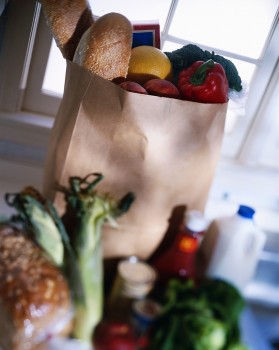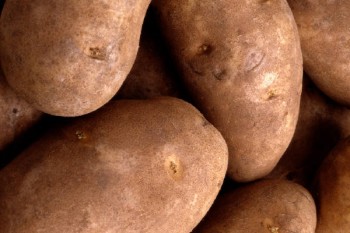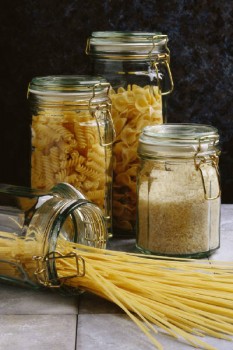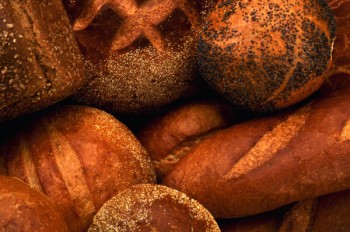Low Glycemic Index Food:
Your Secret Weapon for Optimum Health and Natural Weight Loss
The low glycemic index foods page below is for non medical informational purposes only. For diabetics or people experiencing blood sugar issues, please contact your health care professional.
You Can Do it Yourself!
Instead of selling you pre-made diet foods that contain low glycemic index foods, we teach you the exact scientific methods used in mainstream diet programs. The science presented here is exactly the same method used in famous diet programs like Nutrisystem, Jenny Craig or Medifast.
What we're doing here is breaking the gates wide
open so that you can learn it yourself. That way you can control your
own weight and health without relying on and paying for a weight loss
service. At The Healthy Diet Paradise, participants in our program
experience very fast, safe weight loss through our learning tools and
videos.
Our hair loss diet and weight loss programs follow very specific guidelines. The page below is a brief explanation that clears up any confusion. The glycemic index information below was written in simple terms so that you can easily understand the concept.
Low Glycemic Index Food Guide
Our low glycemic index food guide will not only provide you with excellent health, but once you really learn how to utilize it, it can eliminate many diseases.
When I first began studying the glycemic index, I realized that 98 percent of natural, unaltered foods are low glycemic. Although this is factual, it can still be a bit confusing trying to explain the massive amount of information on low glycemic diets.
The Glycemic Index Explained
The Glycemic Index was first introduced by Dr. David J.A. Jenkins in the early 1980s. Dr. Jenkins was trying to figure out which foods were the safest for diabetics. There were some unexpected findings. When they tested food in real people, they discovered that potatoes, bread and rice caused a very fast rise in blood sugar.
Another finding that really surprised researchers is that candy bars and ice cream produced only a moderate rise in blood sugar.
The Glycemic Index and Blood Sugar
The glycemic index rates foods on their ability to raise blood glucose (blood sugar) on a scale from 0-100.
Pure glucose produces the highest rating on the GI index scale. So pure glucose is set at 100. This glucose rating of 100 is the standard which foods are measured against. The vast majority of foods fall below 100.
Although this is generally the standard test, potatoes and white rice have an index of over 100, giving a clear indication that these starches are considered extremely high glycemic.
Foods that raise blood sugar are foods that contain carbohydrates.
Carbohydrates can be defined as starches that break down into sugar in
the blood stream. This sugar is called "blood glucose."
NutritionData explains the glycemic index here
Sugar Can Come From Many Different Sources
When you are consuming sugars in foods, these sugars don't necessarily come from granulated sugar. Sugars can come from lactose, which is a milk sugar, fructose, which is a fruit sugar, or corn.
Corn is one of the biggest offenders for a low glycemic index diet, and should be avoided in all its forms. High fructose corn syrup is considered low glycemic, but because of the way it's processed, it's very dangerous.
- A high glycemic index diet has a rating of 70 or higher
- A medium glycemic index diet has a rating of 56-69
- A low glycemic index diet has a rating of 55 or less

Advantages of Low Glycemic Index Foods
Lower glycemic index diet foods will have many advantages over higher glycemic index diet foods. The health consequences of eating high glycemic foods is staggering.
Low glycemic index foods can prevent many diseases such as PCOS (polycystic ovarian syndrome), metabolic syndrome, diabetes, heart disease, high cholesterol, Type 1 Diabetes, Type 2 Diabetes, Alzheimer's Disease and obesity. This is a very short list.
Low glycemic index foods prevent many diseases across the board, and can even completely reverse hair loss and cure acne.
There are many illnesses that Americans pay billions of dollars in health care for that can be avoided by using a low GI diet.
Natural Weight Loss Tip:
When you are eating low glycemic index foods, insulin is lowered and normalized. When your insulin is lowered, your body is in fat burning mode. Weight loss is super simple.
When you are eating high glycemic index carbs, your body releases too much insulin and puts your body in fat storage mode. Weight loss is impossible. Insulin is a fat storage hormone.
The Glycemic Load Versus The Glycemic Index
There
is a critical difference between the glycemic index and the glycemic
load of foods. When you are calculating the glycemic load, it takes
into account the fiber content, the portion size and the fat present in
foods that lessen the impact of blood glucose levels. The glycemic load
is a more accurate assessment of food's impact on blood glucose levels.
When calculating the glycemic load, you take the GI index
ranking of a particular food, and then you multiply that number by the
number of grams of carbohydrates per serving, then you are going to
divide that total by 100.
Potatoes Have a Very Bad Reputation for a Low Glycemic Index Food Diet
If you eat a potato alone, you will have a very fast rise in blood sugar, past 100. Some glycemic indices list potatoes as high as 117. Many experts recommend diabetics to avoid potatoes because of this very fast glucose response in the blood.
Note: It should be noted that when certain food types are mixed, it can change the glycemic index rating of high index foods to a moderate level.
For example, if you eat a potato along with a low glycemic index carb such as a stalk of broccoli and a medium-sized steak, the starch in the potato will be absorbed a lot more slowly. The mixed index of these three foods would be somewhere around 55 or 60.

Potatoes are one of the few natural foods that are a high glycemic index food. Americans consume millions of pounds of potatoes per year. The starch in potatoes cause an extremely fast rise in blood sugar.
If a potato is combined with butter or cheese, it can significantly lower the glycemic index of the potato.
When implementing a low glycemic index food diet, potatoes should be eaten sparingly or not at all.
Natural proteins like eggs have an extremely low glycemic index rating.
Pasta is a Moderate GI Food. Pasta gets a green light: Although pasta carries plenty of carbohydrates, pasta raises blood sugar slower than bread because it contains complex, long-chain carbohydrates.
This is not true of spaghetti in a can. Spaghetti in a can is made from flour, and is a high glycemic index food.
Diabetics have to watch their pasta intake, and pasta should not be eaten alone. Pasta raises blood sugar in diabetics very quickly.
Wheat macaroni has a glycemic index of 37, and regular macaroni has a glycemic index of 47. So pasta, because of its slowly absorbed, long-chain carbohydrates, is listed under the category of a moderate glycemic index food.
Click here for guidelines on how to control your blood sugar when eating pasta. Also listed on this page is a very simple brown rice pasta recipe.
Exercise Moderation With Pasta: When an individual is trying to control their weight, moderation with pasta is important because of the high level of carbohydrates present.

So in essence, a high carbohydrate food can be a low glycemic index food. There is a distinct difference.
Most Processed Foods Have a High Glycemic Index
A Rule of Thumb: Here's a really easy way to remember. Most processed foods have a high glycemic index. When a natural substance is pulverized, whether it be fruit, wheat, corn or any other substance, it changes the characteristic of the food.
Once the food is pulverized or juiced, the natural substances are broken down. When the broken down substances enter the bloodstream, the altered substances quickly raise blood sugar levels.
Our bodies are designed to break foods down slowly. Processed foods do not allow for slow absorption of foods, thereby quickly raising blood sugar.
Click on this whole foods link to learn more.
So as a general rule, processed foods are high glycemic index foods. This is not true of all processed foods. You will learn to make the distinction using a glycemic index table. Glycemic index tables are extremely useful when introducing low GI foods for the first time.
When food is in its natural state, it holds a very specific balance provided by nature, and controls blood sugar perfectly.
When you get used to eating low glycemic index foods, you will learn to naturally follow your patterns on a daily basis without even thinking about it. Plus, when you see the tremendous benefits of eating a low GI diet, you most likely will never again eat high glycemic foods again.
Red Light: Because of processing, white flour and wheat flour are exactly the same:
Typically, refined starches such as white rice or cakes cause a very high spike in blood sugar, even more than refined sugar. Although food manufacturers try to sell whole wheat flour as a health food, it is not. Whole wheat flour, after processing, has an extremely high glycemic index.

True whole grain breads are a specialty item, and are hard to find.
As a general rule, refined flours are typically more dangerous and cause severe spikes in blood sugar, and subsequent crashes. When eating low glycemic index foods, it is universally agreed upon that refined flours should be completely avoided.
Refined flour, both wheat and white, can cause blood sugar spikes of over 115, even higher than pure glucose.
What Are Refined Flours?
Most breads have refined flours, such as biscuits, pancakes, crackers, donuts, cakes, pie crust, bagels and pretzels.
Modern wheat has many undesirable properties besides its effects on blood sugar. Click here for more information on the effects of wheat and disease.
Glycemic Diet Resources Listed Below:
The Montignac Method has every single food listed in their databse. It's offered in an easy-to-read format. This website has a very extensive list of different types of flours, which is one of the top questions we get. This website is also extremely easy to navigate.
Remember that in order to eat a low GI diet, you need to consume foods under 55 on the glycemic index. It's super easy once you get used to it.
Your weight will drop without effort, and
you'll feel fantastic
Sheree Gilkey is a participant in the Amazon Services LLC Associates Program, an affiliate advertising program designed to provide a means for sites to earn advertising fees by advertising and linking to amazon.com

